Engaged in the clothing industry for 20 years.

Apparel and accessory designs share the runway at College of Creative Studies
The College of Creative Studies in Detroit presented The Show 2024
on Saturday May 4 at Cadieux Stage. This fourth iteration of The Show
assembled over 200 attendees, with national and international recruiters
from Bottega Veneta, Louis Vuitton, Hermès, Kate Spade, and Coach among the
guests. The Show 2024 featured capsule collections from 23 students with
over 130 looks shown, but up until 2022 the program had focused solely on
accessory design such as footwear, handbags, and small leather goods.
CCS built a reputation as being the school with the largest and most
equipped fashion accessory design department in the United States since the
program was established in 2015 under the leadership of international
footwear designer Aki Choklat. He worked to expand its curriculum to
include apparel design, hiring German designer Rey Pador in 2022 to oversee
the development of apparel.
This show marks the first that fully integrates accessories and apparel
design, but inevitably, many techniques associated with the crafting of
footwear such as leatherwork and the use of hardware were in evidence in
the design and materiality of the garments.
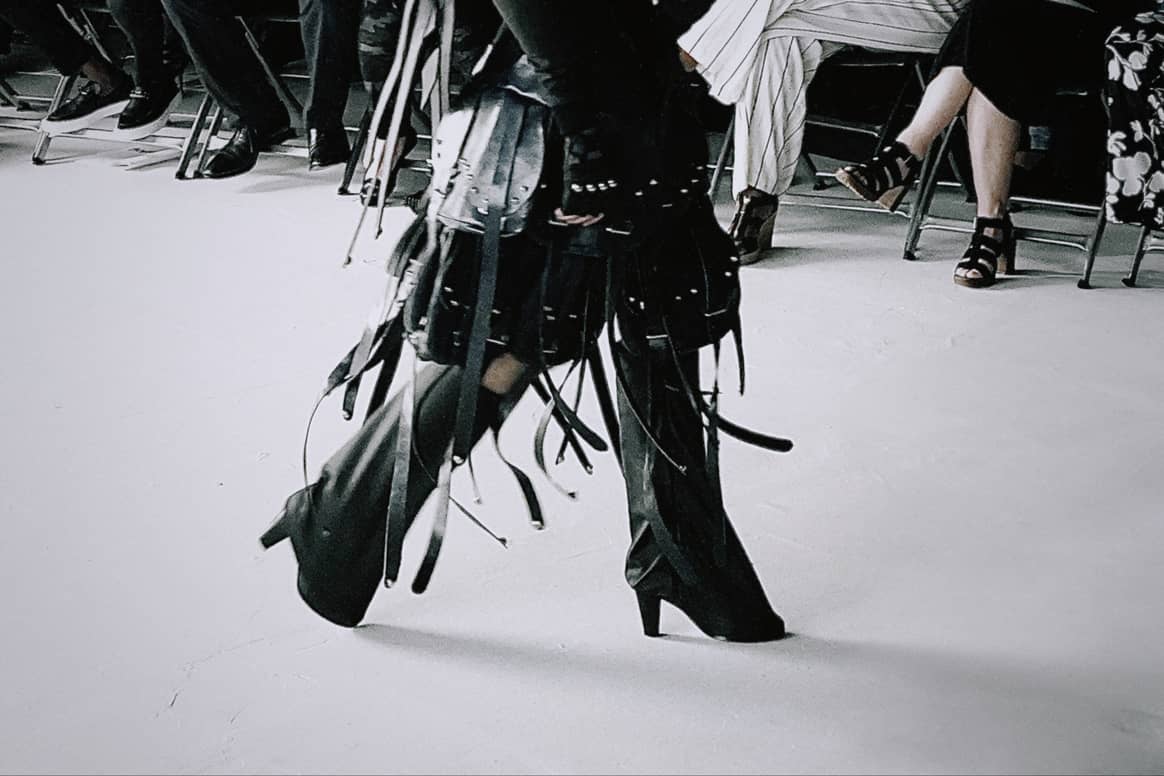
Gabriel Armelin’s use of pre-loved garments and materials included pieces
bearing visibly worn marks, dirt and tears which were crafted into
exaggerated silhouettes in jersey and denim demonstrating influences from
Japanese rock design and early 2000s streetwear. Miles Barron’s capsule
collection “Superfly,” played into classic 1970s colors, patterns and
silhouettes with a combination of upcycled and new materials to create
bags, shoes and jackets while pops of bright oranges and reds recalled the
1970s Motown era.
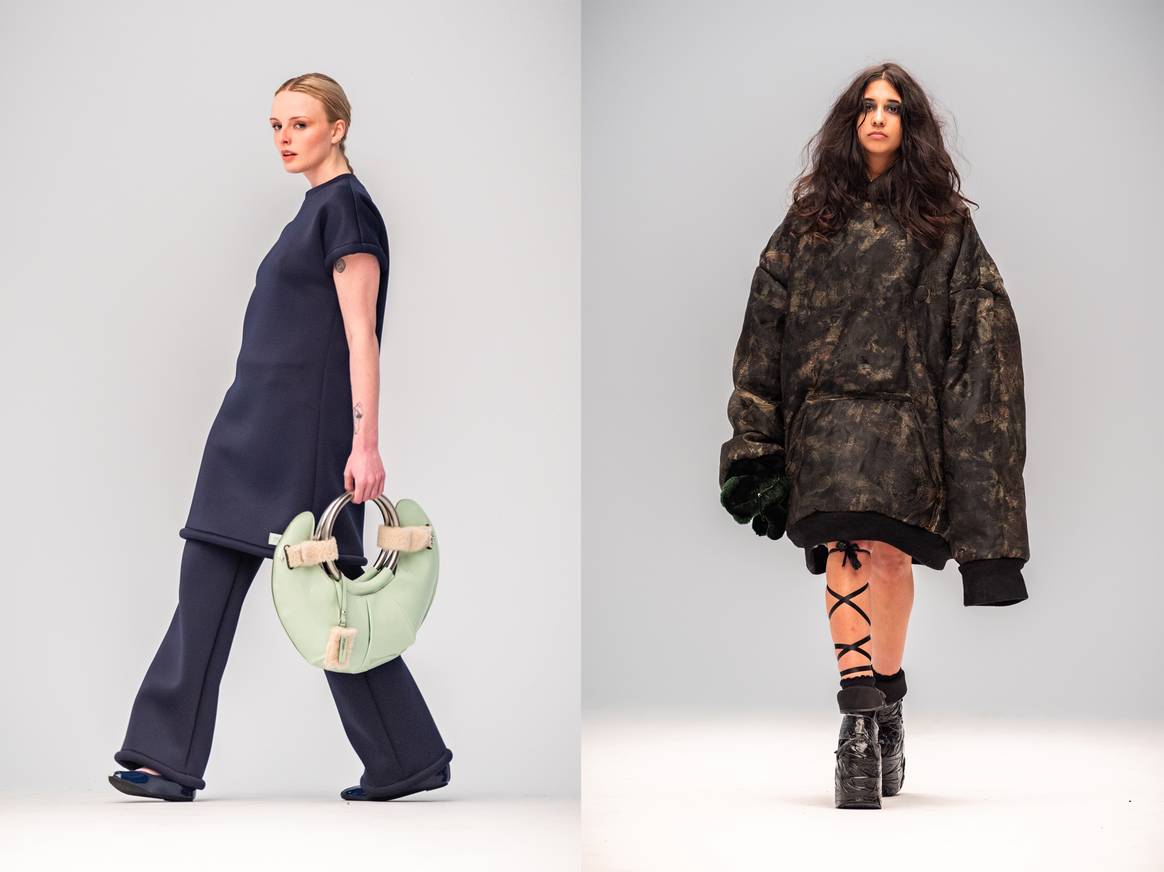
Credits: Emma Albert
Avis Kerns’s painting and sculpture background informed the senior’s
approach to designing garments along with influences from music using
upcycled materials and found objects mainly sourced from junkyards to
create an eclectic collection full of whimsical, childlike fantasy.
Maureen Rossman’s collection “These Are My Friends” explored the internal
conflicts individuals have with the darker corners of their mind in a
thoughtfully designed arrangement of leather harnesses and shoes while
Mamie Scholl’s “Shifted Lines” questioned whether women need to sacrifice
style for function, and explored the dramatic shift of dynamics between
women and the workforce during World War II which offered up inspiration in
the uniforms of female welders, machinists, riveters, and pilots.
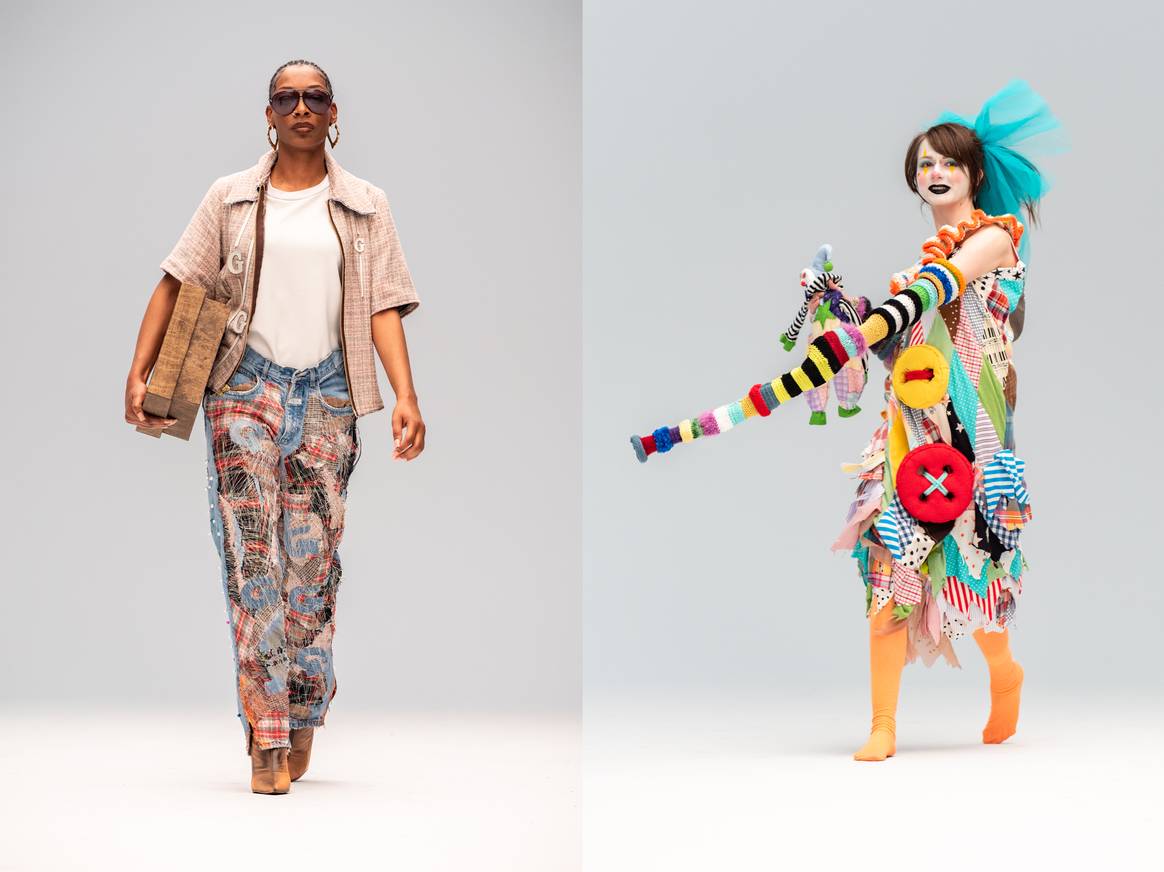
Albert
The Show offered opportunity for international students and even freshmen
to presents garments as well as a strong contingent of sophomore students
including Izzy Abohasira whose designs followed the story of a fictional
spirit based in Detroit, originally inspired by a comic book she wrote,
whose descent into evil is reflected in the sharp lines, exaggerated
shoulders and combination of faux snakeskin and feathers.
Max Honeycutt’s theatrical looks were heavily inspired by deep-sea
creatures, incorporating several water-based methods in the construction
and dyeing of the delicate garments, including ice dye, pole-wrapping and
silk painting to reflect the aquatic environment.
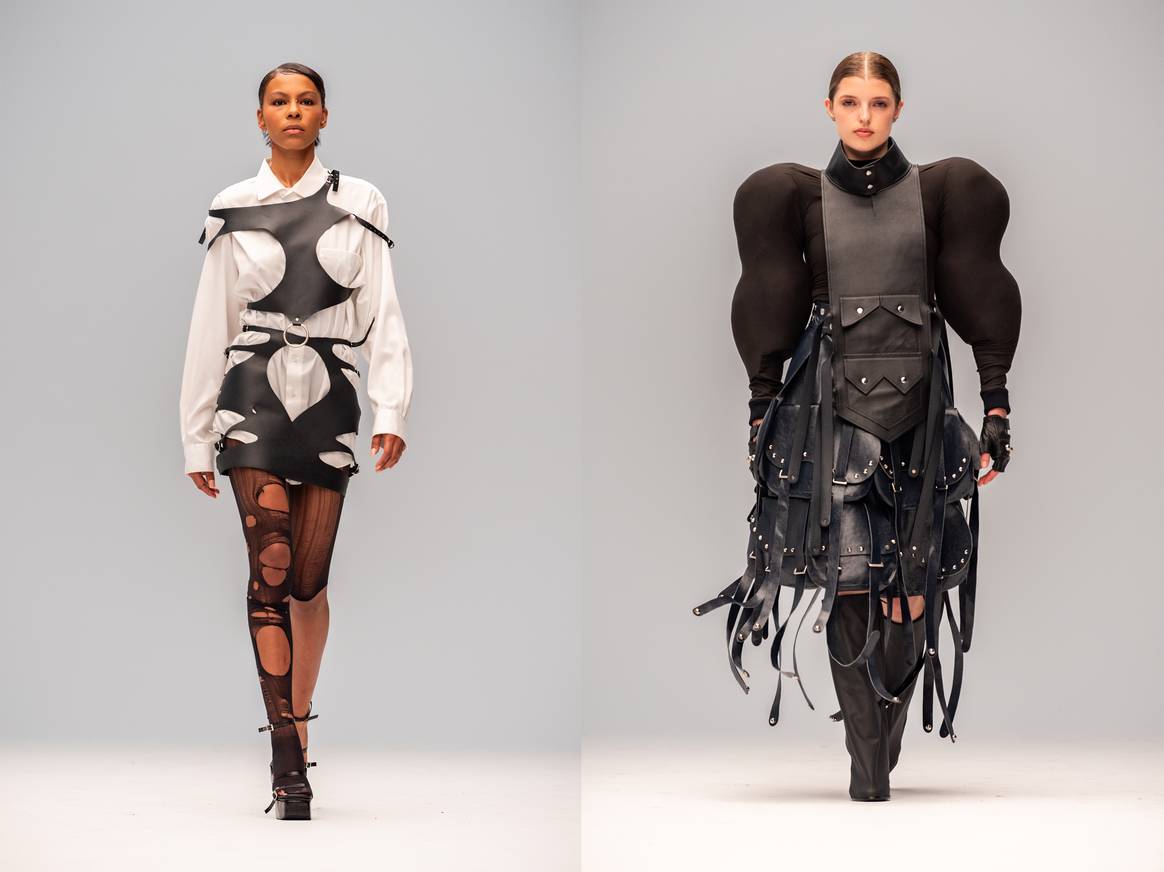
Credits: Emma Albert
“Towanda” pays homage to women’s motorcycle clubs of the 1960s as sophomore
student Veronica Wardowski honors women’s under recognized contributions to
motorcycle culture in a collection intended to center strength and
empowerment through carefully sculpted garments that mimic bulging muscles
in the arms and legs and the use of leather silhouettes adorned with belts,
pouches and silver hardware.
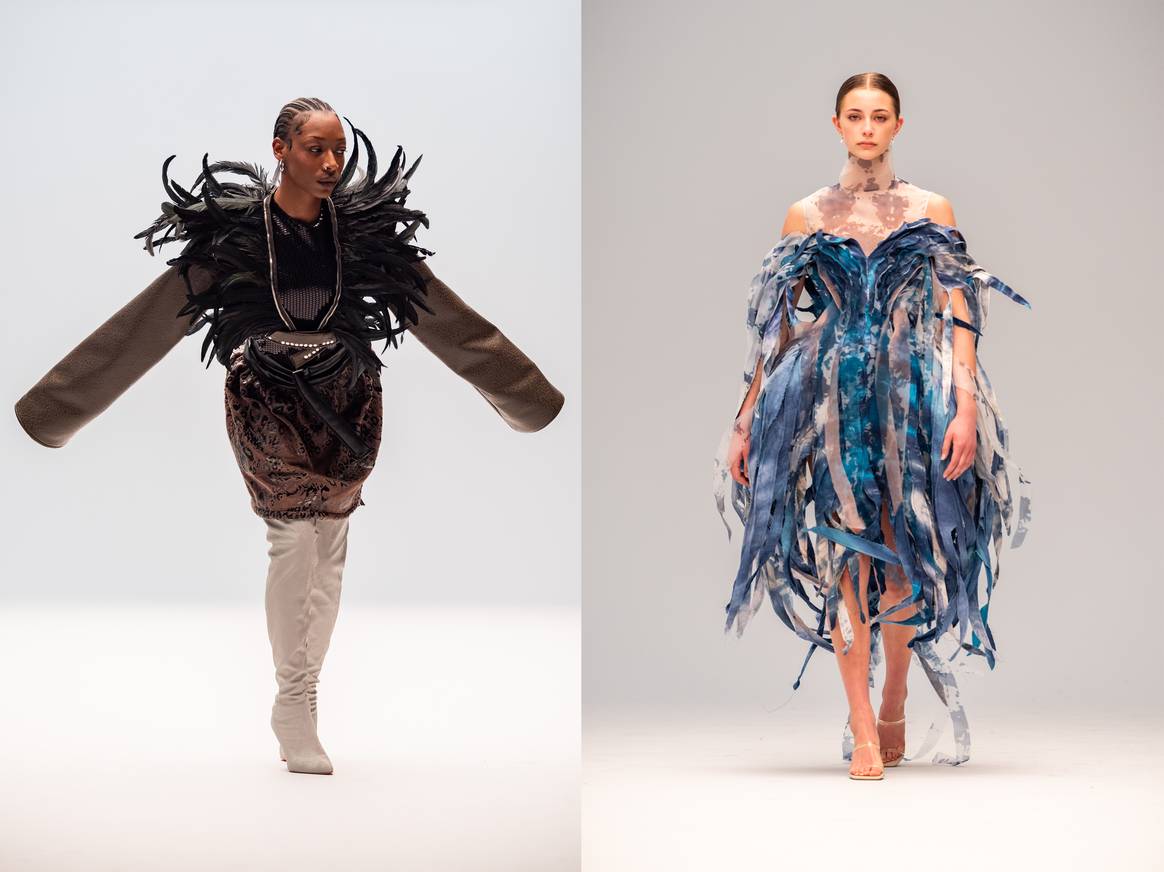
Emma Albert


